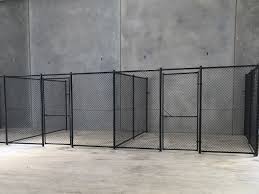How to Choose the Right Storage Cage for Your Needs
2024-09-02
Storage cages are a practical and secure solution for a variety of storage needs. However, with so many options available, choosing the right storage cage can be a daunting task. In this blog post, we’ll guide you through the key factors to consider when selecting a storage cage, ensuring that you find the perfect fit for your specific requirements.
1. Determine Your Storage Requirements
The first step in choosing the right storage cage is to assess your storage needs:
- What Will You Store? Consider the types of items you need to store. Are they large or small? Heavy or light? Fragile or durable? Understanding the nature of your items will help you choose the right size and type of storage cage.
- How Much Space Do You Have? Measure the space where you plan to install the storage cage. This will help you determine the size and configuration that will fit best in your space. Don’t forget to consider the height of the space, especially if you’re considering stackable or tall storage cages.
- How Often Will You Access the Items? If you need frequent access to the items in the storage cage, consider choosing a design that allows for easy entry and exit, such as cages with large doors or mobile options.
2. Consider the Material and Construction
Storage cages are available in various materials and constructions, each offering different levels of durability and security:
- Steel Construction: For maximum security, opt for storage cages made from heavy-duty steel. These are resistant to tampering and provide a high level of protection for valuable items. Powder-coated steel cages also offer additional resistance to corrosion, making them ideal for outdoor or damp environments.
- Wire Mesh Design: Storage cages with a wire mesh design provide visibility of the contents while maintaining security. This is useful in environments where regular inventory checks are necessary, as you can see what’s inside without opening the cage.
- Solid Panels: For items that require privacy or additional protection from dust and debris, consider storage cages with solid panels. These provide a more enclosed storage solution while still offering the security of a cage.
3. Security Features
Security is a key consideration when choosing a storage cage, especially if you’re storing valuable items:
- Locking Mechanisms: Look for storage cages that offer robust locking mechanisms. Padlocks, combination locks, and electronic locks are all options to consider, depending on the level of security you need.
- Tamper-Proof Design: Some storage cages come with tamper-proof features, such as reinforced hinges or concealed locking points. These features can provide extra peace of mind, especially in environments where security is a top priority.
- Alarm Compatibility: If security is a major concern, consider a storage cage that can be integrated with an alarm system. This adds an extra layer of protection and can deter potential thieves.
4. Mobility and Flexibility
Depending on your storage needs, you may want a cage that offers mobility and flexibility:
- Mobile Storage Cages: If you need to move the cage frequently, look for options with wheels. Mobile storage cages allow for easy relocation within a warehouse, retail space, or even between different sites.
- Adjustable Shelving: For flexibility in organizing your items, choose storage cages with adjustable shelving. This allows you to customize the interior layout to suit your storage needs and make the most efficient use of space.
- Stackable Cages: If floor space is limited, consider stackable storage cages. These allow you to build vertically, maximizing the use of available space while keeping the footprint small.
5. Compliance and Safety
In some industries, storage cages must comply with specific safety standards or regulations:
- Fire Safety: If you’re storing flammable materials, ensure the storage cage meets fire safety regulations. Some cages are designed to contain or prevent the spread of fire, which is crucial in certain environments.
- Load Capacity: Always check the load capacity of the storage cage to ensure it can safely hold the weight of the items you plan to store. Overloading a cage can compromise its structural integrity and pose safety risks.
Conclusion
Choosing the right storage cage involves considering your storage needs, the material and construction of the cage, security features, mobility, and compliance with safety standards. By taking the time to assess these factors, you can find a storage cage that not only meets your needs but also enhances the efficiency and security of your storage environment. Whether you’re looking for a simple solution for personal use or a robust system for industrial applications, the right storage cage can make all the difference.



